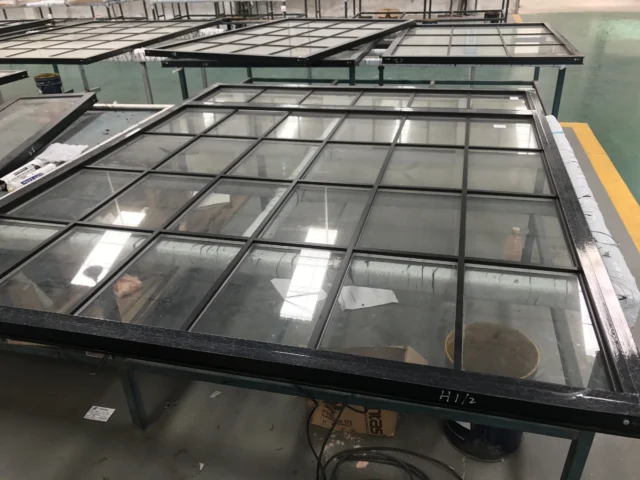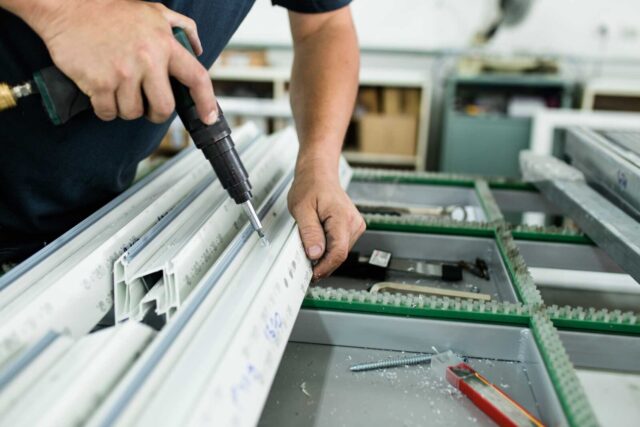
Aluminum windows have become increasingly popular in modern architecture due to their durability, strength, and aesthetic appeal. However, the manufacturing process of aluminum windows is often overlooked despite its critical role in producing high-quality and long-lasting products. From design to installation, the manufacturing process of aluminum windows involves multiple stages and requires precise attention to detail.
In this article, we will explore the different steps involved in the manufacturing process of aluminum windows, providing a comprehensive understanding of the complex and fascinating world of aluminum window manufacturing.
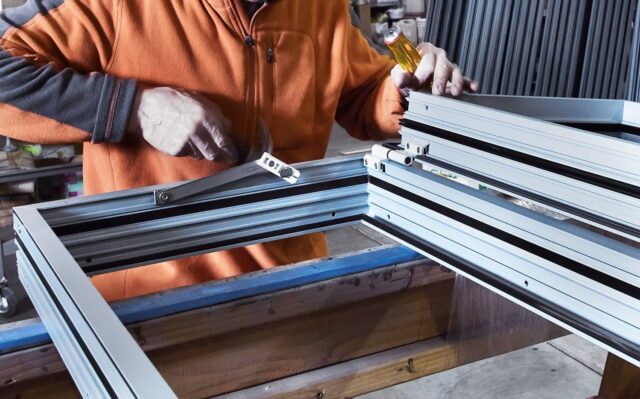
Step 1: Design
The first step in the manufacturing procedure of aluminum windows is the design phase. During this phase, the window manufacturer works closely with architects, contractors, and engineers to create a design that meets the client’s specifications. The design phase involves creating detailed drawings and specifications for the window’s size, shape, and features.
Step 2: Material Selection
After the design phase, the manufacturer selects the appropriate materials for the window. Aluminum extrusions are the primary material used in the manufacturing of aluminum windows. The extrusions are typically purchased from extrusion companies in standard lengths, which are then cut and fabricated to the specific dimensions required for the project.
Extrusion process
The extrusion process is a key stage in the manufacturing process of aluminum windows. It involves heating aluminum billets to a specific temperature and then forcing the molten metal through a die using a hydraulic or mechanical press. The die has a cross-sectional shape that defines the shape of the extruded aluminum profile.
The extrusion process allows for the production of complex shapes and designs with high precision and accuracy. The resulting extruded profiles have a uniform cross-section and a smooth surface finish. They also exhibit high strength and durability, making them ideal for use in the fabrication of aluminum windows.
After the extrusion process, the profiles are cooled and undergo a surface treatment to enhance their appearance and durability. Surface treatments may include anodizing, powder coating, or painting, which provide a protective layer that resists corrosion, weathering, and fading. Surface treatments also allow for a range of color options and finish to match the design and aesthetic requirements of the building.
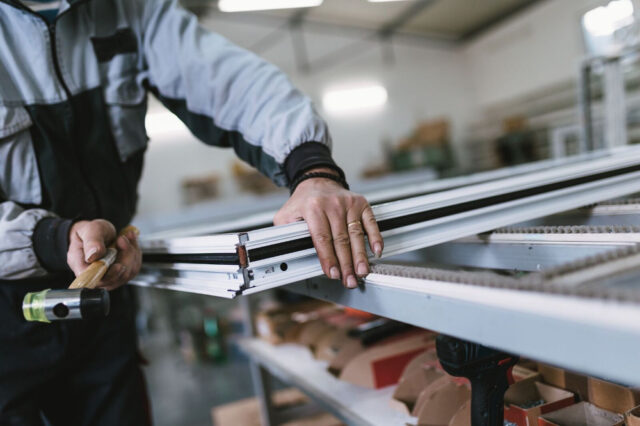
Step 3: Fabrication
The third step in the manufacturing method of aluminum windows is fabrication. During this step, the aluminum profiles are cut and shaped to the required dimensions using specialized machineries, such as saws and CNC routers. The frames are then welded together, creating a sturdy and durable window frame.
Drilling holes for hardware placement is also a crucial part of the fabrication process. The holes must be precisely located and sized to ensure that the hardware fits properly and functions correctly.
Fabrication requires specialized knowledge and equipment to ensure that the frames are accurate and free from defects. Any errors in the fabrication technique can lead to issues with the final product’s performance and functionality.
Step 4: Finishing
After the fabrication procedure, the window frame undergoes a finishing process. The frame is typically cleaned and treated with a chemical etching procedure to create a uniform surface for painting. A powder coating is then applied to the surface of the frame using an electrostatic process. The powder coating is cured in an oven to create a durable and long-lasting finish.
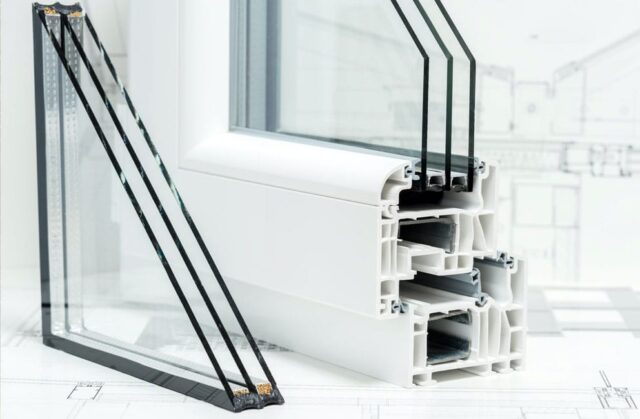
Step 5: Glazing
The next step in the manufacturing process is glazing. The glass panes are cut to the required size and shape and then inserted into the window frame. The glass is held in place using gaskets or glazing beads.
Step 6: Quality Control
Before the windows are shipped out for installation, they undergo a rigorous quality control process. The manufacturer will inspect each window to ensure that it meets the specified design and performance criteria. Any defects or issues are addressed before the windows are packaged for shipment.
Inspection and testing of components
Inspection and testing of components are critical stages in the manufacturing process of aluminum windows. This step ensures that the components are free of defects and meet the required specifications and standards. Inspection and testing involve a range of methods, including visual inspections, measurement checks, and destructive and non-destructive testing.
Visual inspections involve a thorough examination of the components to identify any surface defects, such as scratches, dents, or deformities. Measurement checks involve verifying the dimensions of the components, including the length, width, and thickness, to ensure that they meet the required tolerances.
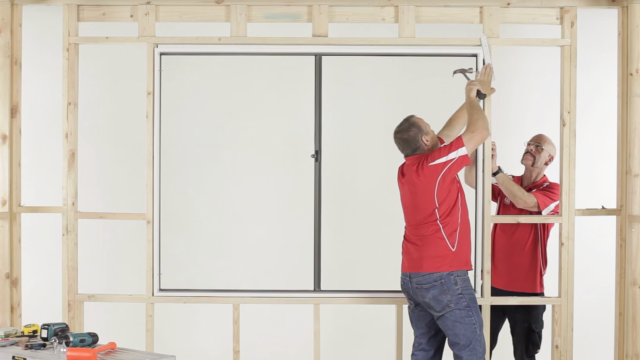
Step 7: Installation
The final step in the manufacturing process is installation. The installation process involves securing the window frame into the building structure using screws, anchors, or other hardware. The glazing is then sealed to prevent air and water infiltration.
Packaging and shipping
Packaging and shipping are crucial stages in the manufacturing process of aluminum windows, as they ensure that the finished products reach their destination safely and in good condition. Proper packaging and shipping also contribute to reducing the risk of damage during transportation and installation, which can save time and money for both the manufacturer and the customer.
The packaging process involves carefully wrapping and securing the aluminum windows in appropriate materials, such as foam, cardboard, or plastic, to prevent scratches or other damage during transportation. The packaging should also include clear labeling and instructions for handling and storage to avoid any confusion or mishandling during transportation.
Conclusion
In conclusion, the manufacturing process of aluminum windows is a complex and highly specialized process that requires skilled labor and cutting-edge technology. From the design phase to the final installation, each step plays a crucial role in ensuring that the final product meets the highest quality standards. By understanding the intricate details involved in the manufacturing process of aluminum windows, we can appreciate the skill, care, and precision required to create such a durable and long-lasting product. Moreover, we can gain insight into the importance of sustainable manufacturing practices and the role of aluminum windows in promoting energy efficiency and reducing carbon footprint. As we continue to innovate and develop new technologies, we can expect to see further advancements in the manufacturing process of aluminum windows, allowing for even greater durability, strength, and aesthetic appeal in the future.

